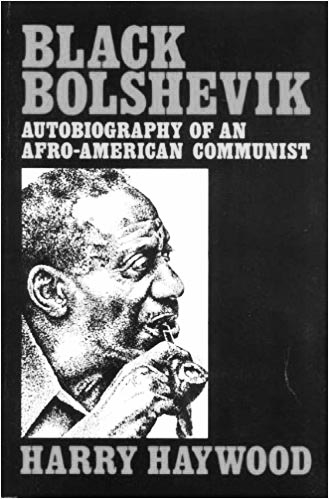 click image for a pdf copy of the bookOn January 25, 1990 the Philadelphia Inquirer reported that the Philadelphia Commission on Human Relations had concluded that “racial and ethnic intolerance seems to be firmly entrenched” in Philadelphia.
click image for a pdf copy of the bookOn January 25, 1990 the Philadelphia Inquirer reported that the Philadelphia Commission on Human Relations had concluded that “racial and ethnic intolerance seems to be firmly entrenched” in Philadelphia.
“I can tell you,” said the Commission Chairman, “race relations are getting worse, not better.” The Executive Director of the Commission commented that racism is a “systemic problem” in the U.S. and that “what is happening locally today is a reflection of what’s happening nationally. What happens in Washington affects how people behave in Philadelphia.”
This report may not be telling us anything we don’t know, but it does bring up an idea many people believe: “Racism will always be here.”
Communists in the Progressive Labor Party (PLP) understand that racism is a part of capitalism and that once we destroy capitalism, with communist revolution, we destroy the basis and the need for racism.
In 1925, a Black communist named Harry Haywood, born in the U.S., went to Moscow. Here’s a brief excerpt from his book Black Bolshevik, which tells of his experience with racism in Russia only eight years after the revolution.
During my entire stay in the Soviet Union, I encountered only one incident of racial hostility. It was on a Moscow streetcar. Several of us Black students had boarded the car on our way to spend an evening with our friend MacCloud. It was after rush hour and the car was only about half filled with Russian passengers. As usual, we were the objects of friendly curiosity. At one stop, a drunken Russian staggered aboard. Seeing us, he muttered (but loud enough for the whole car to hear) something about “Black devils in our country.”
A group of outraged Russian passengers thereupon seized him and ordered the motorman to stop the car. It was a citizen’s arrest, the first l had ever witnessed. “How dare you, you scum, insult people who are the guests of our country!”
What then occurred was an impromptu, on-the-spot meeting, where they debated what to do with the man … It was decided to take the culprit to the police station … there, they hustled the drunk out of the car and insisted that we Blacks, as the injured parties, come along to make the charges.
At first we demurred, saying that the man was obviously drunk and not responsible for his remarks. “No, citizens,” said a young man (who had done most of the talking), “drunk or not, we don’t allow this sort of thing in our country. You must come with us to the militia (police) station and prefer charges against this man.’
The poor drunk was hustled off and all the passengers came along. The defendant had sobered up somewhat by this time and began apologizing before we had even entered the building. We got to the commandant of the station.
The drunk swore that he didn’t mean what he’d said. “I was drunk and angry about something else. I swear to you citizens that I have no race prejudice against those Black gospoda (gentlemen).
We actually felt sorry for the poor fellow and we accepted his apology. We didn’t want to press the matter.
“No,” said the commandant, “we’ll keep him overnight. Perhaps this will be a lesson to him.” (170-171)
What makes this story of anti-racism even more exceptional is that, at the same time, in 1925, in the capital of the U.S., Washington, D.C., thousands of racist Ku Klux Klan members freely marched through the streets. Lynchings (racist mob hangings and other forms of cruel murder) of Black workers and youth were common. In fact, after the end of World War I, into the 1930s, race riots were common and murderous in the U.S. At this time, “race riot” always mean white attacking Black.
Communist Poet Langston Hughes was impressed with the anti-racism of the Russian communists. In 1946 he wrote:
When I was in Tashkent, the regional capital of the Republic of Soviet Central Asia, there were funny little old street cards running about the size of the cable cars in San Francisco. I noticed a partition in the center of these streetcars, and asked a brown-skin Uzbek friend why it was there. He explained to me that in the Tsarist days that partition separated the Europeans from the Asiatics.
I said, ‘You mean the white people from the colored people?’
He said, ‘Yes, before the Revolution, we would have to sit in the back. But now everybody sits anywhere.’
I thought to myself how many white Americans say it will take a hundred years, or two or three generations, to wipe out segregation … But in Tashkent it has taken only a few years … (“The Soviet Union and Color”)
This is pretty amazing, when you think that it wasn’t until many years later that Rosa Parks helped break segregated bus seating in Montgomery, Alabama, in the U.S.
The reversal of the fight Against racism
There are many more stories like these about how far communists had gone towards eliminating racism. Unfortunately, many mistakes were made during and after the revolutions in the Soviet Union and China—not going straight to communism and, instead, maintaining aspects of capitalism, such as money and wages, under socialism. As a result, “free enterprise” capitalism, and with it nationalism and racism, has been restored.
Of course we in PLP have an advantage over comrades of the past. We have their experience, including both successes and errors, to study and to learn from. We now understand that the stage of socialism is a mistake. Our commitment to go immediately to communism after the revolution can only mean greater progress in smashing racism once and for all.